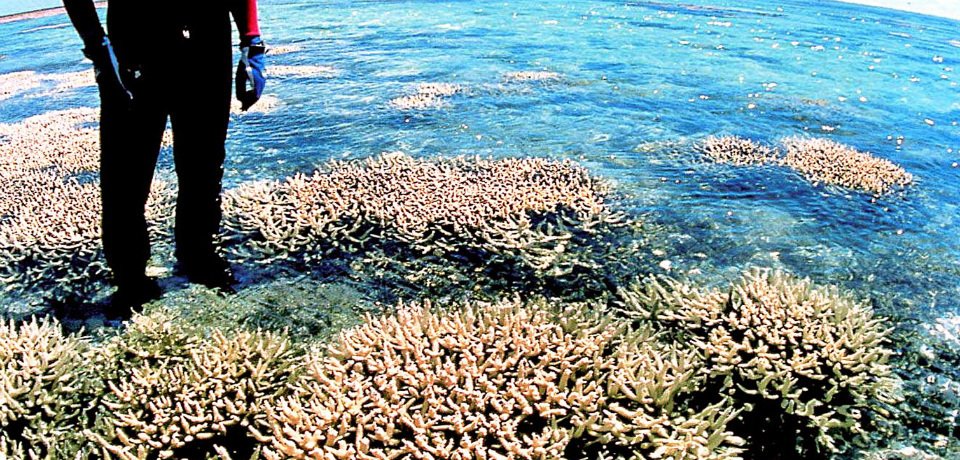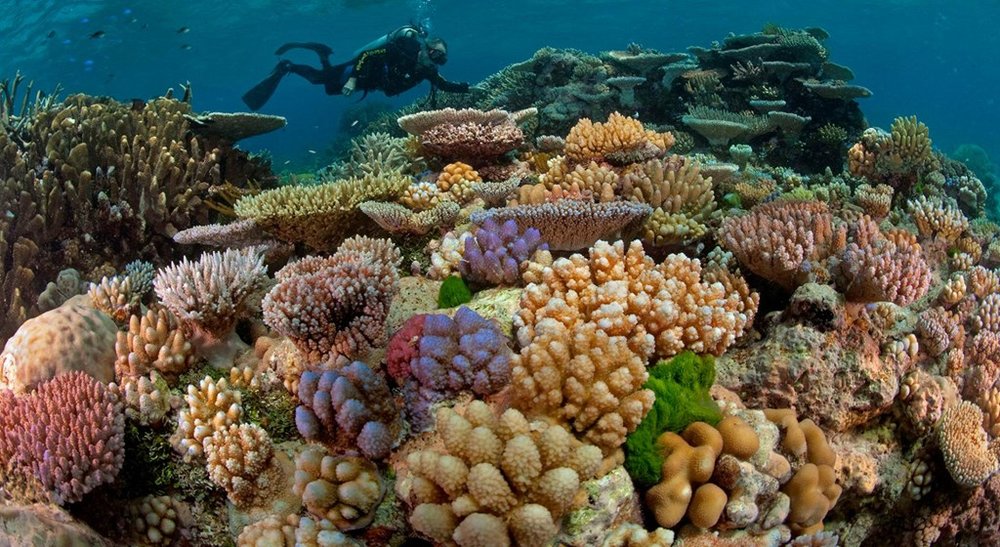
Corals in Great Barrier Reef at the Brink of Extinction!

There once existed a city so beautifully vibrant and variegated, so intertwined and water-rimmed that many believed that it was a single living entity bundled around a dazzling spine that resembled a cluster of emeralds when glimpsed from space.
People crossed oceans to soak up this magical place which opened into new emerald-colored paths, each a new avenue for nursing life. Environmentalists claimed that the city was the world’s biggest ecosystem which spanned over 2,300km – all until this year when the city’s beauty was consumed by what seemed like an invisible plague.
Tragedy in Great Barrier Reef

In 2016, as a result of the heat, more than half of the Barrier Reef’s corals were starved or scorched to death
The scenic city’s admirers watched from the sidelines as one of the world’s most beautiful places suffered massive destruction in 2016 which overran its emerald-colored avenues and forced a number of the habitat’s dwellers to escape the dying ecosystem. Those who decided to stay and weather the horrific destruction died in the famine that followed.
The summer of 2016 left the Great Barrier Reef of East Coast, Australia bereft of its beauty and brilliance, but there was nothing the experts could do to strop the ruination. So, as the unbearable heat plunged through the city, taking from it all its wealth, scientists responded by observing the damage and waiting for the heat wave to pass.
In 2016, the 2,300 km of Australia’s Great Barrier Reef was suddenly trapped under a blanket of dangerously hot water which triggered, what the scientists call, ‘an unprecedented bleaching event’. As a result, more than half of the Barrier Reef’s corals were starved to death.
Although scientists were quick to pick up on the bleaching event in 2016, they weren’t sure about its consequences until recently when a paper published in the Nature Journal pointed out the catastrophe of the mass bleaching event which resembled an autopsy report after a plague that ended half of the planet’s population.
More than Half of the Population Lost

Great Barrier Reef, Australia
The researchers thoroughly inspected each avenue inside the Great Barrier Reef surveying every species that could be found in the once-magical city, to come to a conclusion that the summer of 2016 had transformed the place permanently, and there was nothing that could be done to reverse the damage.
The northern third of the Reef, which was considered the most pristine area of the city, had less than half of its original population of corals remaining. Two of the most important species namely tabular coral, with it’s flat, fanlike structure, and staghorn coral, which resembled precious amber in color, had almost been wiped out completely from the remaining coral population.
But it wasn’t just a couple of species or a small area of the Reef that had been affected. The analysis showed that almost the entire ecosystem had suffered the damage. The author of the eye-opening study, Terry Hughes, said that the catastrophe, which lasted for almost nine months, had accounted for an average of one in three coral deaths. Hughes is the director of Australia’s federal research program called the ARC Center of Excellence for Coral Reef Studies, which, as the name implies, is dedicated to coral research.
The World Could Lose Corals in 50 years

Hugh said that if conditions don’t improve in the next 50 or 100 years, the planet could lose its entire coral population and pristine cities like the Great Barrier Reef
The ARC director said that upon the post-catastrophe inspection, it seemed like the entire ecosystem was crippled and now the city is no longer the pristine land of emerald-colored body of life – it has degraded to something much worse. Hughes says that the ecosystem looks and performs completely differently than it did three years ago. A marine biologist named John Bruno, who wasn’t involved in the study, commented that the results confirm the scientists and environmentalists’ worst fears.
But the troubles for the Great Barrier Reef did not end after the summer of 2016 was over. After scanty months of winter, the Reef was again struck by the heat of summer 2017 as the water covering the entire city began to warm up once again, starting another mass bleaching event. Hugh believes that the rising global temperatures due to climate change could be the cause of the coral destruction.
More in Medical Conditions
-
Is It Safe to Travel to Paris? Essential Tips for Tourists
When considering a trip to Paris, one of the first questions that often arises is, “Is it safe to travel to...
June 20, 2024 -
Hematoma vs Bruise: What Is the Difference?
When it comes to injuries, hematoma vs bruise are often used interchangeably, but they refer to different medical conditions. Understanding the...
June 12, 2024 -
What Is Unipolar Depression? Here’s What You Need to Know Right Now
Depression casts a long shadow over many lives, with symptoms that affect everything from our energy levels to our ability to...
June 7, 2024 -
A Comprehensive Guide on How to Heal Anxious Attachment Style
If you often find yourself seeking constant reassurance from your partner or requiring endless validation to feel secure, you may be...
June 1, 2024 -
Why Is My Skin Peeling on My Face After Skincare? Here’s What You Need to Know
Experiencing skin peeling on your face after implementing a skincare routine can be perplexing and frustrating. This phenomenon, where the skin...
May 23, 2024 -
What Is a Mental Edge, and How Do You Get It?
Have you ever wondered why some individuals seem unshakably confident under intense pressure, finding a way to excel when it matters...
May 15, 2024 -
When to Worry About Varicose Veins? Here’s What You Need to Know
Varicose veins are a common issue, affecting about 20% of adults. They’re usually seen as unsightly blemishes on the legs but...
May 12, 2024 -
Why Is Discipline Important: The Ultimate Guide to the Importance of Discipline
Discipline is undoubtedly one of life’s most crucial character traits. It shapes how we approach tasks, manage our time, and...
May 3, 2024 -
Have I Fallen Out of Love or Am I Depressed? Everything You Need to Know
Have I fallen out of love or am I depressed? You’re not alone in this query. In the diversity of human...
April 26, 2024















You must be logged in to post a comment Login